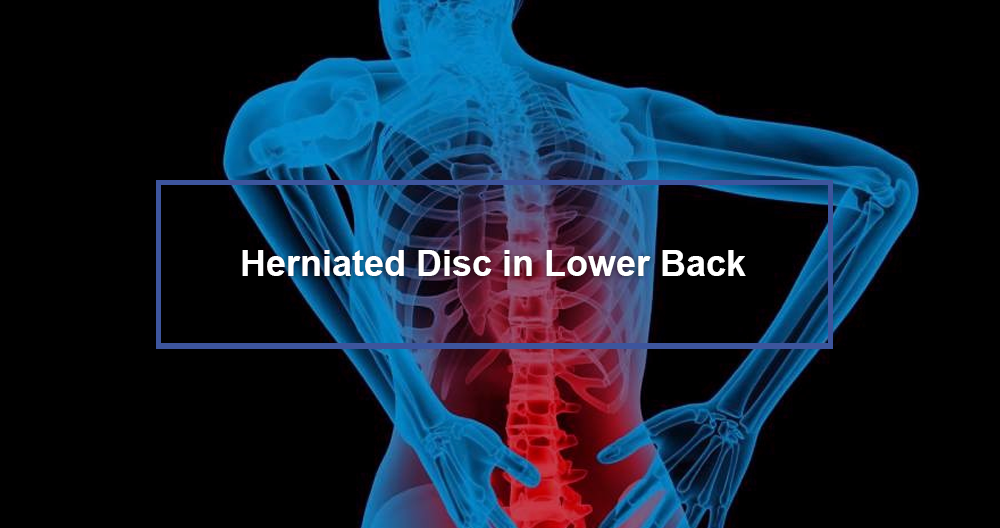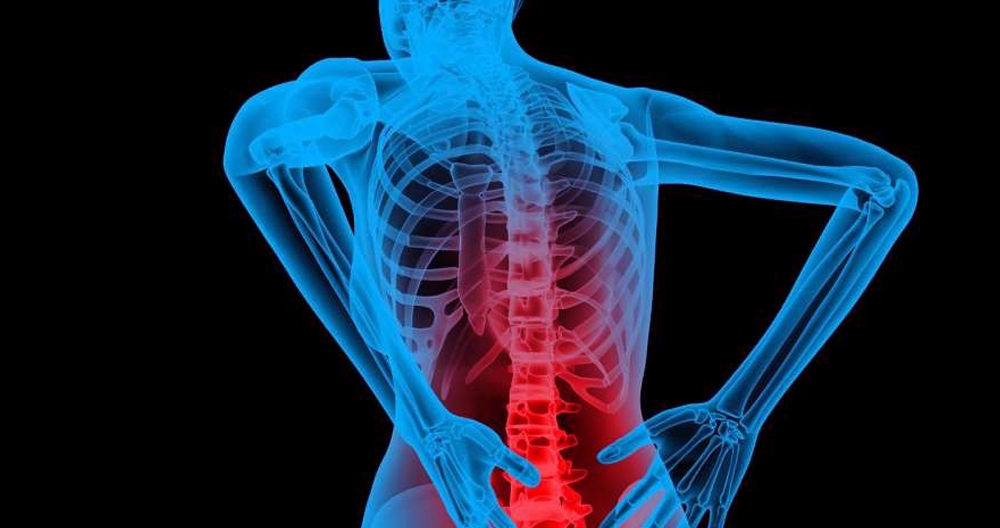
A herniated or bulging disc can happen anywhere along the spine. However, it is most common in the lower back. This condition is also known as a bulging, protruding or ruptured disc. This is the most common reason for lower back pain.
At some point in our lives, 60 to 80% of people will experience lower back pain. These people may experience leg pain or low back pain from a herniated distal disc. While a herniated disc may be painful, most people will feel better within a few months or less of receiving nonsurgical treatment.
Anatomy
24 bones make up the spine. They are stacked on top of one another and called vertebrae. These bones are connected to form a channel that protects the spinal cord.
Lower back consists of five vertebrae. This is the lumbar spine.
The following are other parts of your spine:
Spinal cord and nerves. These electrical cables run through your spinal canal and carry messages between the brain and your muscles. Through foramen, openings in the vertebrae that allow nerve roots to branch out of the spinal cord, called foramen.
Intervertebral discs. Between your vertebrae is a flexible intervertebral plate. These discs have a flat and round shape and are about a quarter of an inch thick.
The intervertebral discs are shock absorbers during running and walking. They consist of two parts:
- Annulus fibrosus. This is the outer, flexible and tough ring of a disc.
- Nucleus pulposus. This is the soft and jelly-like center of the disc.
Herniated Discs Cause
Herniated discs are most commonly caused by natural, age-related wear to the spine. This is known disc degeneration. High water content is common in young children and adults. As we age, the water content in our discs decreases and the discs become less flexible. The space between the vertebrae and discs begins to shrink. As a result, the discs are more vulnerable to herniation.
A herniated disc can also occur after a trauma event like a fall.
How Lumbar Disc Herniates
The annulus is a tough outer ring that protects each disc’s gel-like interior, also known as the nucleus Pulsosus.
As they age and become more spongy, some of the fluid in the discs becomes less elastic. The discs will become more difficult and flatter. This process, known as disc degradation, can begin early in life and often shows up in imaging tests at an early age.
If the spine is subject to stress or pressure, the disc’s outer layer may crack, bulge or tear. This may occur in the lower back, also known as the lumbar spine. The disc protrusion can push against nearby spinal nerve roots. Oder the nerve could be irritated from the inflammatory substance in its interior. It can result in shooting pains down the leg and into the buttock.
The doctor may inform a patient with a herniated spine that they believe the herniated disc was caused by degenerative disc disease. This terminology can be misleading and alarming. This is not a progressive disorder. It does not always cause persistent, or chronic, problems.
Lumbar Herniated disc Symptoms are usually short-lived
A lumbar herniated or bulging disc can cause severe pain, but most people will not feel the effects for long.
90% of people who experience a herniated disc in the lumbar region will still feel symptoms six weeks later. This is even after they have not had any medical treatment.
Experts believe symptoms caused by a bulging disc in the lumbar may be resolved for three reasons.
The body responds to the herniation by shrinking the size of the foreign material and decreasing the number of inflammatory proteins near the nerve roots.
Some of the water in the disc can be absorbed into the body over time. This causes the disc to shrink. The disc that is smaller will be less likely to get into nerve roots, which is irritating.
Lumbar extension exercises can help move the herniated discs away from the spine. This is something that the medical community debates.
The symptoms will improve if the herniated material becomes smaller, which reduces the chance of it irritating the nerve root.
While a lumbar herniated spine can cause pain, it’s common for it to be accompanied by no other symptoms.2
This is why it is so important to diagnose if a herniated or bulging lumbar disc is the problem.
Herniated Discs Risk Factors
Your risk of a herniated distal disc may be increased by certain factors. These factors include:
- Gender. Most likely to have a herniated distal disc are men between 20 and 50 years old.
- Improper lifting. Herniated discs can result from improper lifting. Twisting while lifting can also expose your back. It is better to lift with your legs than your back to protect your spine.
- Weight. Being overweight can put additional strain on your lower back.
- Repeated activities that strain your spine. Many jobs require physical exertion. Some jobs require constant lifting, pulling and twisting. You can save your back by using safe lifting techniques and other movement techniques.
- Frequent driving. Sitting for prolonged periods can result in pressure on your spine.
- A sedentary lifestyle. Regular exercise is key to avoiding many medical conditions, such as a herniated disc.
- Smoking. It is believed that smoking reduces oxygen supply to discs and causes faster degeneration. More information: Smoking and Musculoskeletal Wellness
Herniated Discs Symptoms
Herniated discs most often occur in the lower back. But, they can also occur in your neck. Signs and symptoms vary depending on the location of the disc, and whether it presses on a nerve. Herniated discs typically affect one side.
- Arm or leg pain. A herniated disc in the lower back can cause pain. It is possible to feel pain in the lower part of your foot.
- You’ll feel the most pain in your arm and shoulder if you have a herniated cervical disc. You might feel the pain in your arm or leg if you cough, sneeze and move into certain positions. Pain is sometimes described as burning or sharp.
- Tingling or numbness. A herniated disc can cause radiating numbness, tingling or weakness in the affected nerves.
- Weakness. Weakness of the muscles served by affected nerves. This can make you stumble or limit your ability to lift or hold things.
It is possible to have a herniated spinal disc without experiencing any symptoms. If it is not visible on a spinal scan, you might not even know that it exists.
Herniated Discs Complications
Just above your waist is where your spinal cord ends. Your spinal cord ends just above your waist. This is where you will find a set of long nerve roots (cauda, equina). In rare cases, disc herniation may compress the entire spinal canal and all nerves. Emergency surgery might be required in rare cases to avoid paralysis or permanent weakness.
Get emergency medical attention immediately if you need it.
- Worsening symptoms. The symptoms of numbness, pain, and weakness can get so severe that it makes it difficult to do your daily tasks.
- Bladder problems or bowel dysfunction. Cauda equina syndrome may cause incontinence, or difficulty urinating with a full bladder.
- Saddle anesthesia. This gradual loss in sensation affects areas that could touch a saddle, including the inner thighs, the back, and the area surrounding the rectum.
Herniated Discs Prevention
The following steps can be taken to help prevent a herniated or bulging disc:
- Exercise. Exercise.
- Keep your posture good. This helps to reduce the pressure on your spine. When you are sitting for long periods of time, make sure your back is straight. You should lift heavy objects correctly, and let your legs do the majority of lifting.
- A healthy weight is important. Excessive weight places more pressure on the spine. This makes them more susceptible for herniation.
- Quit smoking. Stop using tobacco products.

